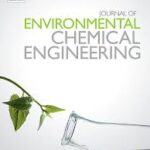Microbial synthesis of biopolymers from methane presents an environmentally friendly alternative to traditional plastics production. The production of polyhydroxyalkanoates (PHAs) from methane was assessed, along with the impact of various cosubstrates on PHA copolymer composition. Valeric acid, as the most effective cosubstrate for poly(3-hydroxybutyrate-co-3-hydroxyvalerate) accumulation, was used for the first time to study PHAs production from methane by mixed methanotrophic culture in a sequential feast-famine process. The influence of various gas flow rates, cosubstrate feeding strategies, and pH on culture growth and PHA accumulation was investigated. A high 3-hydroxyvalerate fraction of approximately 60 mol% at 0.1 standard litre per minute (slpm) and 40 mol% at 0.2 slpm was observed. The maximum biomass concentration of 2.25 g/L and a PHA concentration of about 0.5 g/L was achieved. A pH change led to a microbial shift from Methylocystis hirsuta to Cupriavidus metallidurans, without impacting the PHA accumulation capacity.
Methanotrophic bacteria can use atmospheric methane (CH4) as a sole carbon source for the growth and production of polyhydroxyalkanoates (PHA). The development of CH4 bioconversion processes relies heavily on the selection of an efficient methanotrophic culture. This research assessed the effect of selected growth conditions, such as nitrogen sources on the enrichment of methanotrophic cultures from various environments for PHA accumulation. Nitrate-based medium favoured the culture growth and selection for PHA-producing methanotrophic cultures with Methylocystis sp. as a major genus and accumulation of up to 27 % polyhydroxybutyrate (PHB) in the biomass. Three PHB-producing cultures: enriched from waste activated sludge (AS), peat bog soil (PB) and landfill biocover soil (LB) were then tested for their ability to produce PHA copolymer at different CH4:O2 ratios. All enriched cultures were able to utilise valeric acid as a cosubstrate for the accumulation of PHA with a 3-hydroxyvaleric (3HV) fraction of 21–41 mol% depending on the inoculum source and CH4 concentration. The process performance of selected cultures was evaluated and compared to the culture of reference strain Methylocystis hirsuta DSM 18500. All mixed cultures irrespective of their inoculum source had similar levels of 3HV fraction in the PHA (38 ± 2 mol%). The highest poly(3-hydroxybutyrate-co-3-hydroxyvalerate) (PHBV) production was observed for AS culture at 10 % CH4 with an accumulation of 27 ± 3 % of dry cell weight (DCW), 3HV fraction of 39 ± 2 mol% and yield of 0.42 ± 0.02 g-PHA/g-substrate.





